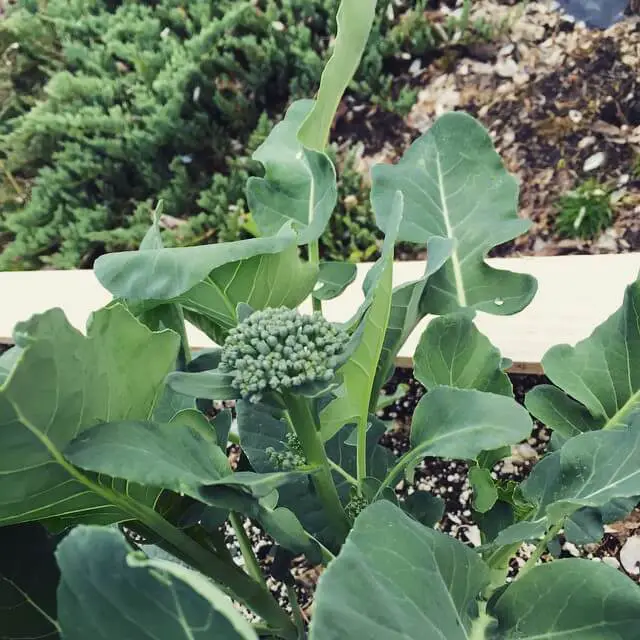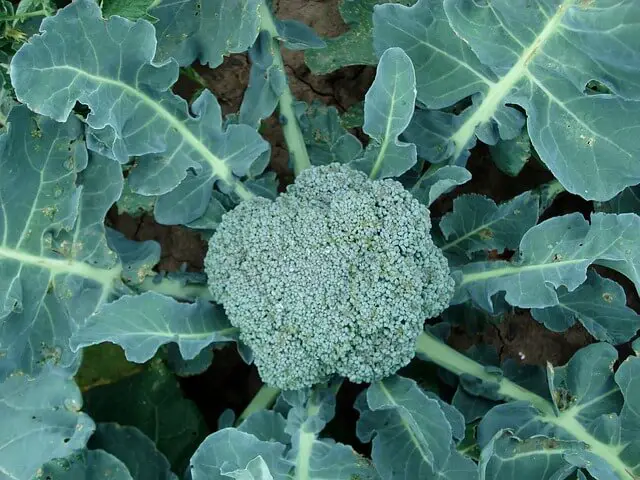We use affiliate links to run our site. When you buy through links on our site, we may earn an affiliate commission, without any added cost to you. Learn more
If you’ve never done it before, growing broccoli at home can seem like a daunting task, but trust me it is not as hard as it might seem rather it will be a fun and rewarding experience for you. Though this is not as easy as some of the other vegetables, you can definitely try your hand on it.
Here in this article, I will discuss how to grow broccoli. This is a step-by-step guide that will walk you through. You’ll learn everything you need to know to get started, including tips on how to choose the right location, how to prepare the soil, and what type of fertilizer to use.
Follow the points discussed in this article and I am sure you will not be disappointed.
Related read: 7 Easiest Vegetables to grow
How To Grow Broccoli At Home
Though primarily broccoli plant is a cool-weather crop, they are very sensitive to extreme temperature. The ideal temperature for growing broccoli plant is around 65°F to 70°F.
So it is sensible to start with a transplant.
A broccoli plant needs 6-8 hours of daily sunlight to grow. Lack of sunlight can result in thin, leggy plants and inferior quality heads.
A pH of 6.0 to 7.0 is best for growing broccoli. Just like Cabbage, and Cauliflowers, Broccoli also flourish in nitrogen and potassium-rich soil. Make sure the soil drains well.
Some organic matters from time to time will help the plant immensely.
loose up the soil to a depth of 15 inches by using a tiller and mix a 2.5-inch layer of compost and a little bit of manure with it.
You can also grow broccoli in containers. For growing broccoli, use containers that are larger than 5 gallons.
When to Plant Broccoli:
The best time to plant broccoli is in early spring or in late summers. Adjust the dates so that the broccoli matures before it gets too hot. You can grow the seedlings indoors a few weeks ahead of your last spring frost date.
A warm soil is good for the broccoli seeds to germinate.

How To Plant Broccoli:
Start indoors. Sow the seeds in coconut coir or other growing mediums. After a while, they will start growing seedlings.
Once the seedlings are 4 to 6 weeks old they will have 4-5 leaves. Now you can plant the broccoli seedlings outdoors.
One of the main problems of planting seedlings is the root disturbance. Use biodegradable pots for growing broccoli seedlings. It will prevent root disturbance during transplanting.
Plant the seedlings 15-20 inches apart with a gap of 3 feet between two rows. And the water thoroughly.
Like most of the vegetables, broccoli also needs a minimum of 6 hours of direct sunlight every day.
How To Water Your Broccoli Plant:
First thing first, make sure your soil has enough moisture. Don’t wait for the soil to dry out completely before giving water. This will cause the head to open up and become unpalatable. Whereas constant moisture would make a large, but tender head.
Water 1 to 1 1/2 inch of water per week. While watering broccoli plants make sure you don’t wet the developing heads. If the head remains wet for a long time it will attract pests and diseases. Read how to water a plant for more information.
Use Mulch:
the roots of a broccoli plant are quite shallow. So don’t till the nearby soil. To protect the plant from weeds use mulch cover. A thick layer of mulch will no only suppress the weeds but will also help to keep the moisture intact for a longer period of time.
Growing Broccoli Heads:

For growing a good broccoli head apply water regularly. If you don’t receive any rainwater at least 1 to 1.5 inches of water per week. Here are some useful tips for growing a good-sized broccoli head:
1. Fertilize the soil heavily. Add composted manure, blood meal, or cottonseed meal into the soil before planting. Apply fish emulsion or other organic fertilizers during the growing season.
2. Add boric acid (1/4 cup to 2 gallons of water) as a foliar spray. Remember too much boric acid can be toxic for the plant so use it in a moderate amount.
3. Use a variety of broccoli that produces large-sized heads.
Fertilizing A Broccoli Plant:
Use a balanced fertilizer to fertilize a broccoli plant. This means that the fertilizer will have an equal ratio of nitrogen, phosphorus, and potassium. You can find this type of fertilizer at your local gardening store.
Follow the instructions on the package. Typically, you should apply the fertilizer around the base of the plant. Avoid getting any fertilizer on the leaves of the plant, as this can burn them.
Maintain an active feeding and watering schedule even after you harvest the first head. This will ensure the growth of a second head.
Pests/Diseases of a broccoli plant:
Some of the most popular pests and diseases of broccoli plants are
Aphids:
They suck the sap of the plant which results in the curling of leaves. Use organic pest control methods to control aphids.
Cabbage Loopers:
The loopers make small holes on the leaves. Check the undersides of the leaves and remove the looper with hands. Use a floating row cover just after planting to prevent them from accessing the plant.
Cabbage Root Maggots:
Root maggots can occur in any year but are more common during springs. Infested broccoli plants appear discolored, wilted, or stunted. Use physical barriers like row covers. Cover plants with a row cover, especially in springs.
Cabbage Worms:
The worms can cause large ragged holes in leaves as they feed on the plant. If the numbers of worms are more they can cause extensive damage very quickly.
Handpick the worms from plants and destroy them. Remove eggs from leaves prior to hatching. use organic pest control methods discussed in this article.
Downy Mildew:
This is characterized by yellow patches on broccoli leaves. The main reason for this is the moist weather. Keep broccoli leaves as dry as possible with good air circulation. Buy resistant varieties.
White Rust:
white spots on leaves and stems. Rolling of leaves. The simplest way to prevent this disease is by using crop rotation. And planting disease-free seeds.
Black Rot:

It is a bacterial infection. It moves through the veins of plants, travels to the stem, and affects the plants. Space plants for good air movement and drying. Control weeds in and around the crop. Remove infected plants after harvest.
Nitrogen Deficiency:
Nitrogen deficiency results in the yellowing of bottom leaves. For remedy apply to add blood meal. Blood meals have a high level of nitrogen but low levels of phosphorous.
Disease-Resistant Varieties:
The followings are some of the popular disease-resistant varieties of broccoli:
| Variety | Resistant to |
| Green Valiant’ | Resistant to head rot. Performs well in spring and fall |
| ‘Everest’ | Resistant to head rot and downy mildew. |
| ‘Green Comet’ | Resistant to downy mildew & heat tolerant |
| ‘Premium Crop’ | Resistant to downy mildew & heat tolerant |
When To Harvest Broccoli:
The edible part of a broccoli plant is the head and the best time to harvest heads is before they start to flower. Once it starts flowering the taste will deteriorate very fast. Always harvest broccoli during the cool, morning hours.
A 4- to 7-inch tight head with large, dense flower buds is the desired size for harvesting broccoli heads.
Use a sharp knife to cut below the head with some leaves to protect the head. While cutting take 6 inches of the stem along with the broccoli head.
Many varieties of broccoli will have side shoots. These shoots continue to grow even after you cut the main head of the plant. These will grow more heads that you can harvest later.
How to Store Broccoli:
Though it is best to eat right after the harvest, you can also store them well. Cover it with perforated plastic bags and put them in the refrigerator.
Conclusion:
Growing broccoli at home is a fun and easy way to get fresh, delicious broccoli anytime you want. By following the simple steps above, you can have your own little broccoli patch in no time.
I hope this post was helpful to you. You can find more related articles in this link. In the meantime, don’t forget to share this information with others.
Like the article? Don’t forget to PIN IT

Amazon and the Amazon logo are trademarks of Amazon.com, Inc, or its affiliates.

Hi there! My name is Prasenjit and I’m an avid gardener and someone who has grown a passion for growing plants. From my hands-on experience, I have learned what works and what doesn’t. Here I share everything I have learned.
